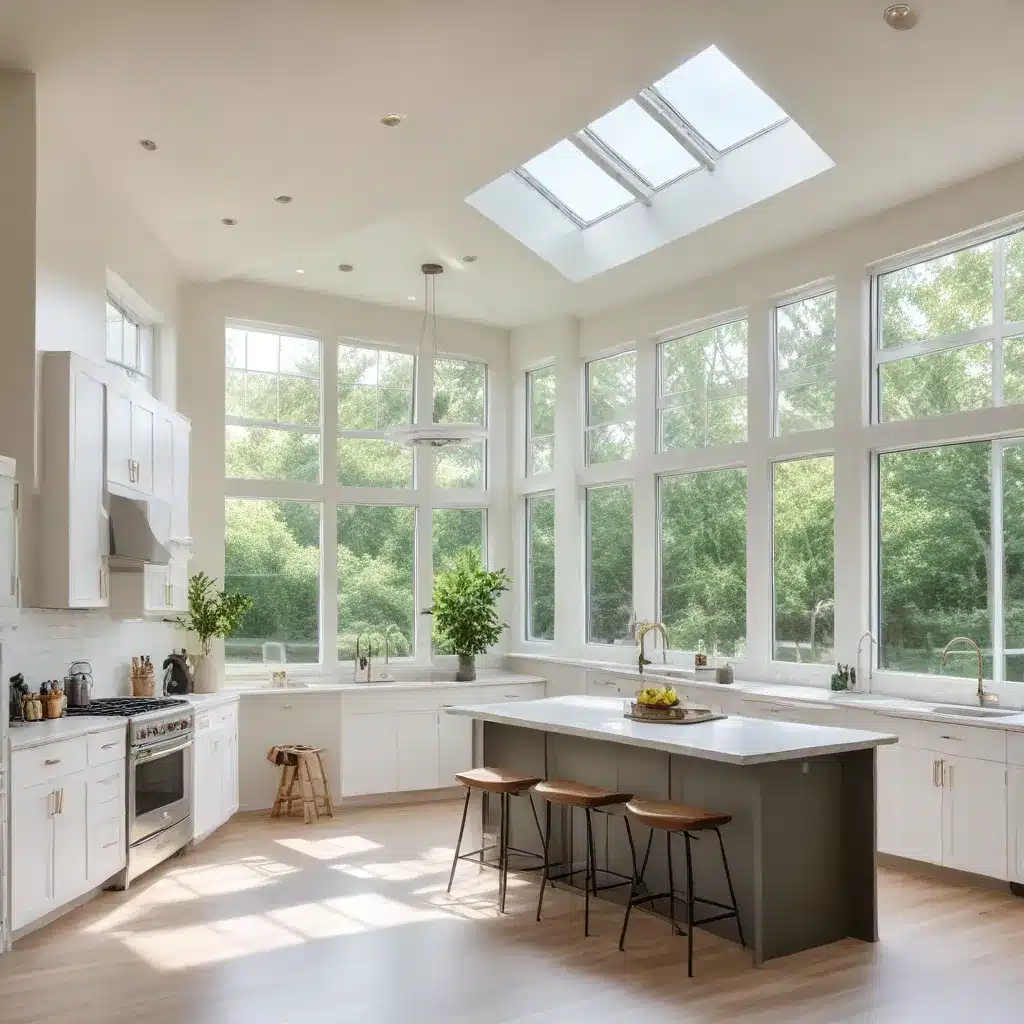Natural light is a powerful yet often overlooked element in home design and renovation. By intentionally harnessing the benefits of sunlight, homeowners can transform their living spaces into bright, airy retreats that elevate mood, promote wellness, and enhance the overall aesthetics of the home. As an experienced home improvement consultant writing for Reluctant Renovator, I’m here to guide you through the strategies and techniques for maximizing natural light through your next renovation project.
The Benefits of Natural Light
Improved Mood and Productivity: Exposure to natural light has been shown to positively impact our mental and physical well-being. Sunlight helps regulate the body’s circadian rhythms, improving sleep quality and boosting mood and energy levels. In fact, studies have found that increased natural light in a workspace can lead to higher productivity and employee satisfaction.
Energy Efficiency: Relying on natural light to illuminate your home can significantly reduce your energy consumption and lower utility bills. By minimizing the need for artificial lighting, you can enjoy cost savings while also reducing your carbon footprint – a win-win for both your wallet and the environment.
Enhanced Aesthetics: Bright, well-lit spaces feel more open, welcoming, and visually appealing. Sunlight can accentuate the colors and textures of your home’s interior, creating a sense of warmth and vibrancy that artificial lighting alone cannot replicate. The right balance of natural and artificial light can make a space feel more expansive and inviting.
Strategies for Maximizing Natural Light
Windows and Skylights
One of the most effective ways to bring natural light into your home is by strategically placing windows and skylights. Large, floor-to-ceiling windows can flood a room with sunlight, creating a seamless connection between the indoor and outdoor spaces. Opt for south-facing windows to capture the sun’s rays throughout the day, or experiment with north-facing windows for a softer, more consistent glow.
For rooms with limited wall space or those located in the interior of the home, skylights and light tubes can be transformative. Skylights provide both natural illumination and the opportunity to introduce artificial lighting for nighttime use, while light tubes are an efficient way to channel sunlight into smaller, enclosed spaces.
Reflective Surfaces
Amplifying the effects of natural light can be achieved through the strategic use of reflective surfaces. Incorporate glossy finishes, light-colored paint, and mirrored accents to bounce light around the room, creating a brighter and more spacious ambiance. A reflective backsplash in the kitchen or strategically placed mirrors can significantly enhance the flow of natural light.
Minimizing Obstructions
Ensure that natural light can reach its full potential by minimizing any physical obstructions in your home. Prune overgrown foliage outside, remove heavy curtains or draperies, and consider an open floor plan that allows light to permeate throughout the living spaces.
Renovation Techniques for Brighter Spaces
Open Floor Plans
Embracing an open floor plan can be a game-changer when it comes to maximizing natural light. By removing walls and creating a more seamless flow between rooms, you allow sunlight to circulate freely, making the entire space feel brighter and more expansive.
High Ceilings
Incorporating high ceilings into your renovation can further enhance the feeling of airiness and luminosity. Taller ceilings not only create a more impressive visual impact but also provide more surface area for windows, allowing natural light to penetrate deeper into the room.
Neutral Color Schemes
When it comes to paint colors, lighter, neutral shades tend to reflect natural light more effectively than darker hues. Opt for soft, airy palettes that complement the brightness of your renovated space, creating a cohesive and harmonious aesthetic.
Designing Airy and Luminous Homes
Balancing Natural and Artificial Lighting
While maximizing natural light is the primary goal, incorporating strategic artificial lighting can complement and enhance the overall luminosity of your home. Dimmable fixtures, task lighting, and accent lighting can be used to create depth, highlight architectural features, and ensure a balanced and inviting atmosphere, even in the absence of sunlight.
Ventilation and Air Flow
Pairing bright, sun-filled spaces with ample ventilation and air flow can create a refreshing, rejuvenating atmosphere. Consider incorporating operable windows, skylights with ventilation options, and seamless indoor-outdoor transitions to promote a constant exchange of fresh air and natural light.
Seamless Indoor-Outdoor Transitions
Blurring the lines between your home’s interior and exterior can significantly amplify the effects of natural light. Expansive glass doors, sliding wall systems, and strategically placed windows can establish a harmonious connection between the indoor and outdoor living spaces, allowing sunlight to flow freely and creating a sense of openness and tranquility.
Transforming your home into a bright, airy oasis is an achievable goal, even for the most reluctant of renovators. By incorporating the strategies and techniques outlined in this article – from optimizing window placement to embracing reflective surfaces and open floor plans – you can unlock the full potential of natural light and create a living environment that nurtures your well-being and enhances your daily life.
As an experienced home improvement consultant, I’ve seen firsthand the transformative power of natural light in renovations. Whether you’re tackling a full-scale remodel or simply seeking to brighten up a few key spaces, the Reluctant Renovator community is here to support you every step of the way. Embrace the beauty and benefits of natural light, and let it guide you towards a brighter, more rejuvenating home.




